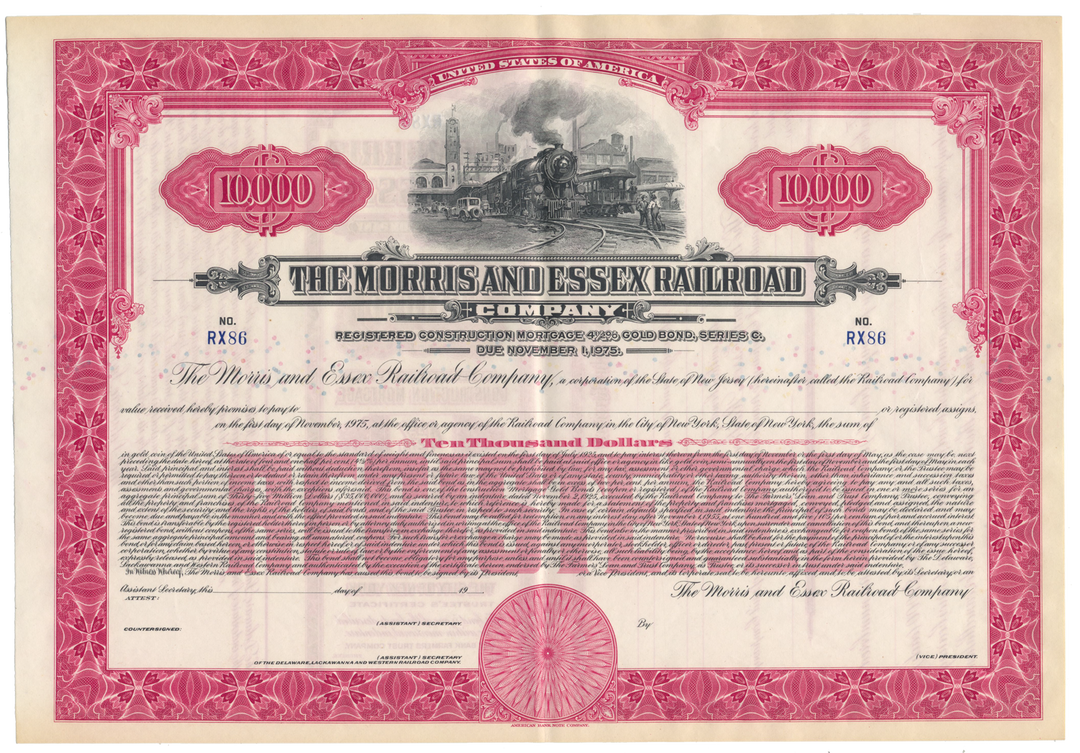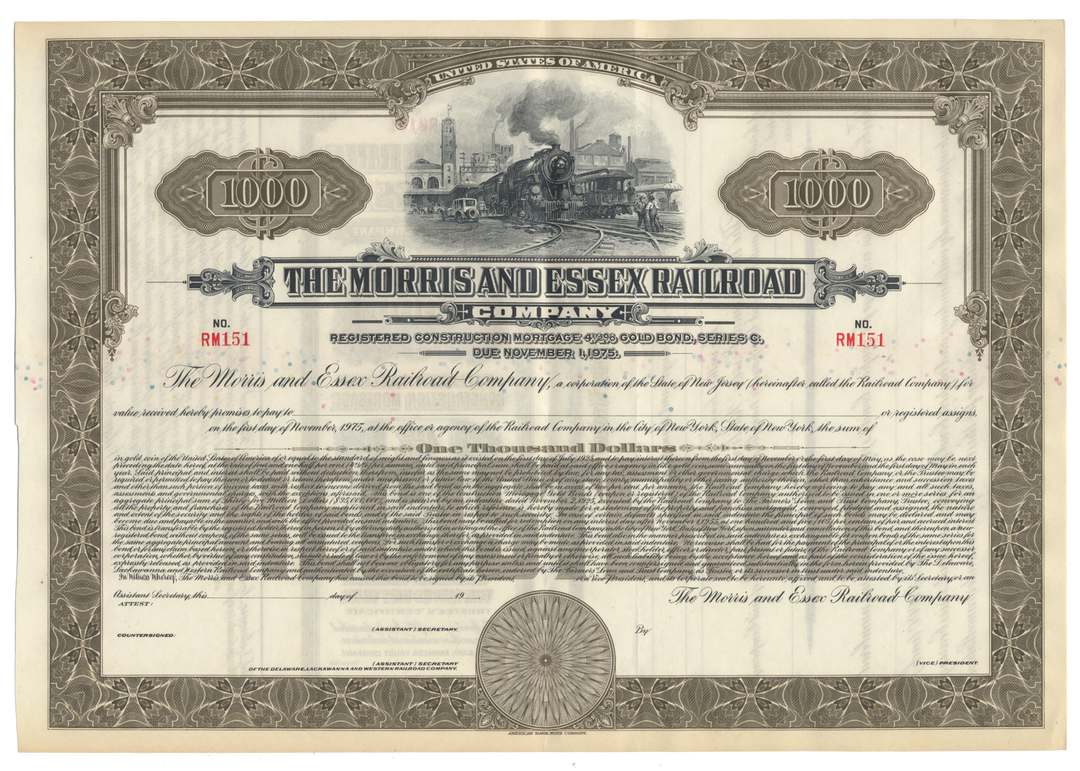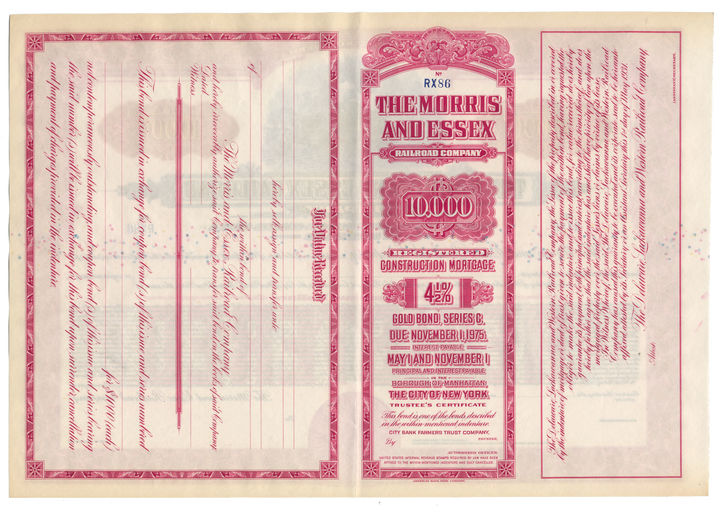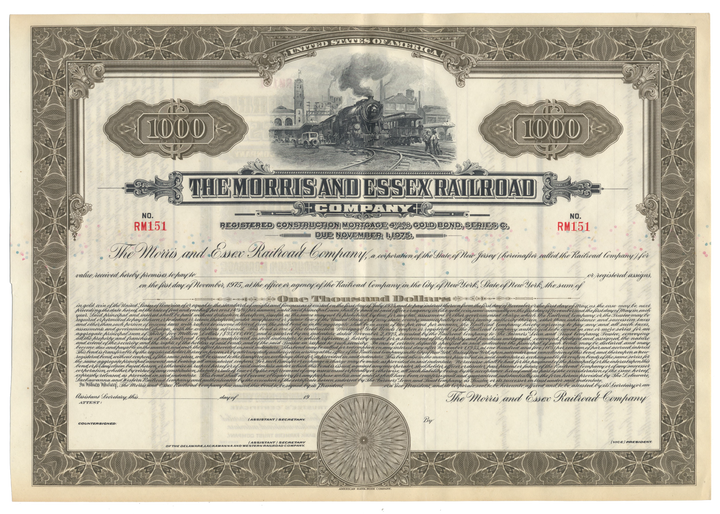Morris and Essex Railroad Company
- Guaranteed authentic document
- Orders over $75 ship FREE to U. S. addresses
Product Details
| Company | Morris and Essex Railroad Company |
| Certificate Type |
Registered Construction Mortgage Gold Bond |
| Date Issued | Unissued, circa early to mid 1900's |
| Canceled | No |
| Printer | American Bank Note Company |
| Signatures | NA |
| Approximate Size |
13 1/2" (w) by 9 1/4" (h) |
|
Product Images |
Representative of the piece you will receive |
| Authentic | Yes |
| Additional Details | NA |
Historical Context
The Morris & Essex Railroad was the third railroad to plan a route across the state of New Jersey from New York to Pennsylvania. Following the Camden & Amboy and the Elizabethtown & Somerville, it didn't exactly get the best choice for the route.
The charter was filed in 1835. The route selected was a much more difficult crossing then the minimal grades encountered in the center part of the state. The railroad surveyed a route starting from Newark and heading west across the state toward Dover. As each section was built, the M&E negotiated for better rates rather then searching for better grades. Little by little the railroad crossed the state from Newark through the Oranges then onto Summit, Chatham, Morristown and finally reaching Dover in 1848.
The M&E's first trains started running on the eastern end in 1836. These first trains, like most of this era were horse drawn. The M&E didn't start running under steam until a year later. Its first engine was built in New Jersey, not England like they were a decade earlier. This engine was named The Orange.
After reaching Dover, the M&E briefly paused, before continuing towards its ultimate goal: The coal fields of Pennsylvania. It then built west to Hackettstown were it turned southwest toward the Delaware River and Phillipsburg. The M&E finally reached the Delaware in 1865.
With the mainline finally completed, the M&E then looked toward the iron mines in Morris Country. First lines were built to tap the mines in Newton and Andover. A branch from Newark to Bloomfield was built at the same time. In 1867, the Boontown branch was built.
On the eastern end, things were not proceeding as smoothly. The M&E still ended here and had no route of its own into the lucrative New York markets. To continue on, the M&E would need to cross the Passaic. Help came from the Steven's family of Hoboken. Edwin Steven realized that he could weaken the New Jersey Railroad by strengthening the M&E, and in the process, increase the value of his holdings on the Hudson.
The Morris & Essex ended its life as an independent entity on December 31, 1868. On this date, the Delaware, Lackawanna & Western Railroad leased the M&E forever – which turned out to end in 1976.
Related Collections
Additional Information
Certificates carry no value on any of today's financial indexes and no transfer of ownership is implied. All items offered are collectible in nature only. So, you can frame them, but you can't cash them in!
All of our pieces are original - we do not sell reproductions. If you ever find out that one of our pieces is not authentic, you may return it for a full refund of the purchase price and any associated shipping charges.













